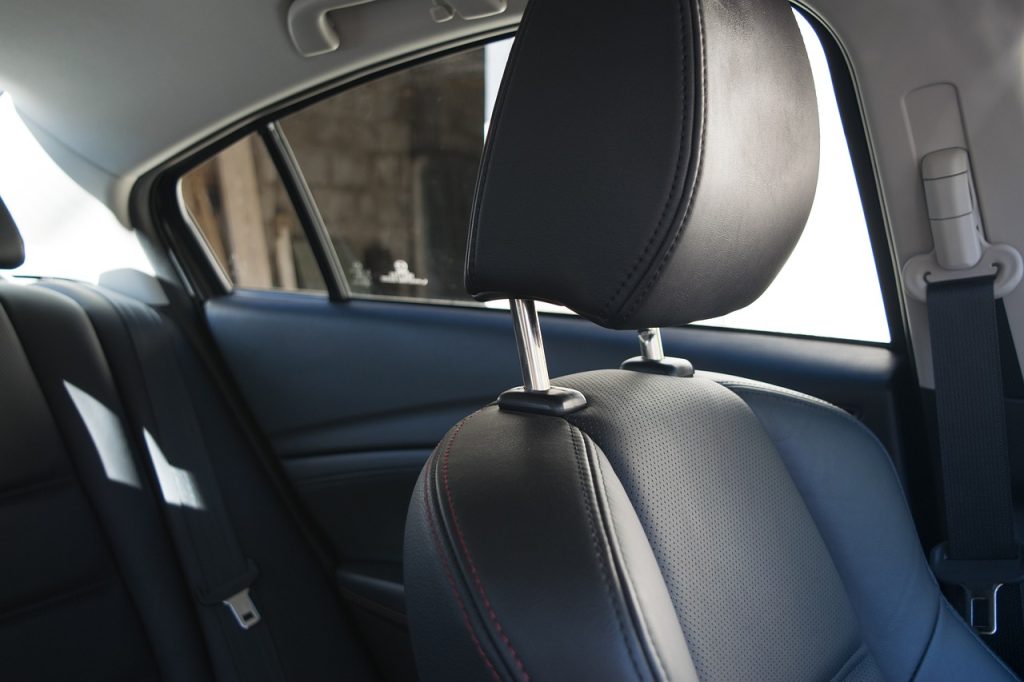Car insurance is a necessary expense for drivers, but that doesn’t mean you have to break the bank to get adequate coverage. By understanding the factors that influence auto insurance costs and implementing strategic approaches, you can effectively save money on car insurance. In this comprehensive guide, we’ll explore various strategies for securing the cheapest car insurance quotes and maximizing your savings without sacrificing quality coverage.
Key Takeaways:
- Understand the Factors: Driving record, car type, coverage limits, location, and (in some states) credit score impact your premium.
- Compare Wisely: Utilize comparison websites, direct insurers, and independent agents. Prioritize coverage details and customer service over just price.
- Customize Your Policy: Adjust coverage limits, deductibles, and consider specialized options to fit your needs and budget.
- Leverage Discounts: Explore safe driver, multi-policy, and vehicle safety discounts for significant savings.
- Beware of Pitfalls: Avoid hidden fees, low coverage limits, scams, and limited payment options. Choose wisely, prioritizing both affordability and adequate protection.

What Factors Influence the Cost of Car Insurance?
Understanding why your car insurance costs what it does is empowering. Instead of simply accepting the price tag, knowing the key factors that influence your premium allows you to make informed decisions and potentially save money. Here’s a deeper dive into the major players:
- Driving Record: Your Past Paves the Way:
A clean driving record, free of accidents and violations, is your golden ticket to lower premiums. Conversely, speeding tickets, DUIs, and at-fault accidents can significantly increase your rates. The severity and frequency of these incidents play a role, so maintaining a safe driving record is crucial.
- Vehicle Type: Does Your Car Attract Risk?
Not all cars are created equal in the eyes of insurance companies. Factors like safety features, repair costs, and theft rates influence your premium. Generally, sports cars, luxury vehicles, and older models with lower safety ratings tend to be more expensive to insure compared to fuel-efficient, newer cars with advanced safety technology.
- Coverage Limits: Striking the Right Balance:
The higher your coverage limits (the maximum amount your insurance will pay for repairs or damages), the higher your premium. While it’s tempting to opt for the most comprehensive coverage, consider your budget and risk tolerance. Do you drive a frequently borrowed car? Do you live in a high-risk area? Evaluating your needs can help you find the sweet spot between affordability and necessary protection.
- Location, Location, Location: Where You Park Matters:
Insurance companies consider your address when calculating your premium. Urban areas with high accident rates, theft statistics, and vandalism concerns typically see higher rates compared to rural areas. If you recently moved, inform your insurer to ensure your premium reflects your new location’s risk profile.
- Credit Score: More Than Just Borrowing Power (in some states):
In many states, your credit score is used to determine your insurance premium. This practice, known as credit-based insurance scoring, is based on the correlation between good credit history and responsible driving behavior. Maintaining a good credit score can translate to lower insurance costs, while a poor score could lead to higher premiums. (It’s important to note that not all states use credit scores for insurance pricing.)
By understanding these key factors and making informed choices, you can take control of your car insurance costs and secure cheaper car insurance rates without compromising on necessary coverage. Remember, comparing quotes from various providers and exploring available discounts can further enhance your savings journey.
Where Can I Find Affordable Car Insurance Rates?
Finding affordable car insurance quotes is crucial for saving money, but navigating the vast options can be overwhelming. Here’s a breakdown of different sources and their pros and cons to help you make informed decisions:
Comparison Websites:
- Pros: Efficient, convenient, compare multiple insurers at once.
- Cons: Might not offer all carriers, generic quotes may not capture individual discounts, potential privacy concerns with sharing info.
- Tips: Use reputable sites, refine searches with detailed information, compare apples-to-apples coverage levels.
Direct Insurers:
- Pros: Access exclusive discounts, potentially faster claim processing, direct communication with carriers.
- Cons: Limited comparison options, may not offer the best rates for your profile, requires visiting multiple websites.
- Tips: Check for online discounts and promotions, inquire about bundling options, compare with other quotes before finalizing.
Independent Agents:
- Pros: Personalized guidance, access to multiple carriers, negotiate on your behalf, advocate for your needs.
- Cons: May charge fees, rely on agent’s expertise, limited online options available.
- Tips: Find agents with strong reputations, compare quotes from their offerings with others, understand any potential fees upfront.
Prioritize finding the right balance between affordability and adequate coverage to meet your individual needs. By being an informed consumer and utilizing these strategies, you can effectively navigate the car insurance market and secure the best possible rates.

How Can I Customize My Car Insurance Policy to Lower Costs?
While finding affordable auto insurance rates is key, customizing your policy empowers you to balance savings with essential coverage. Consider these strategies:
- Coverage Limits: A Balancing Act:
- Review annually: Assess driving habits, vehicle value, and potential risks.
- High-risk areas? Consider higher limits for liability and collision/comprehensiveness.
- Low-risk scenarios? Explore decreasing limits, potentially offering significant savings.
- Deductible Dance: Higher Threshold, Lower Premium:
- Understand the trade-off: Higher deductible, lower premium, but larger upfront cost in claims.
- Match deductible to financial comfort: Choose an amount you can confidently cover if needed.
- Young drivers & new vehicles? Consider starting with lower deductibles for peace of mind.
- Declutter the Coverage Chorus: Dropping Unneeded Notes:
- Rental car coverage? Only needed if you frequently rent.
- Towing assistance? Evaluate usage and roadside assistance availability in your area.
- GAP insurance? Consider if you have outstanding car loans.
Additional Tips:
- Specialized coverages: Explore options like classic car coverage vs. collector car insurance.
- Seasonal adjustments: Adapt coverage for winter driving, higher theft risks, etc.
- Usage-based insurance: Pay-per-mile options emerging for low-mileage drivers.
Customization is a journey, not a destination. Regularly reassess your needs and adjust your policy to reflect your evolving life and driving habits. By striking the right balance between affordability and adequate protection, you can cruise confidently on the road, knowing you’re covered for what matters most.
What Strategies Can I Use to Compare Different Car Insurance Rates?
Effective comparison of rates goes beyond simply grabbing a few auto insurance quotes. To truly secure the best deal, follow these comprehensive strategies:
- Gather Diverse Quotes:
Don’t limit yourself to a single source. Utilize a mix of:
- Comparison Websites: Conveniently compare multiple insurers at once, but be aware they may not include all carriers and generic quotes might miss individual discounts.
- Direct Insurers: Check major insurers’ websites for online discounts and promotions, inquire about bundling options, and compare their rates with others.
- Independent Agents: Leverage their expertise and access to multiple carriers, but clarify any potential fees and compare their offerings with other sources.
- Go Beyond Price:
Price isn’t everything. Carefully compare coverage details across quotes:
- Coverage Levels: Do all quotes offer the same liability, collision, and comprehensive coverage you need? Understand the difference between minimum coverage and adequate protection for your vehicle and driving habits.
- Deductibles: This is the amount you pay out-of-pocket before insurance kicks in. Higher deductibles lower your premium, but can be financially challenging during claims. Choose a deductible you can comfortably afford.
- Exclusions: Identify what’s not covered in each policy. Look for exclusions that might impact your specific needs (e.g., certain modifications, natural disasters in your area).
- Prioritize Customer Satisfaction:
Great rates matter, but so does reliable service. Research:
- Claim Settlement Process: Look for insurers known for prompt and fair claim settlements. Consider online reviews and complaint ratios.
- Customer Service Accessibility: Ensure the insurer offers convenient communication channels (phone, online chat) and responsive customer service representatives.
- Financial Stability: Choose an insurer with a strong financial rating to guarantee their ability to cover claims in the future.
- Leverage Additional Resources:
Go beyond basic quoting:
- State Insurance Departments: Consult your state’s department website for consumer resources, complaint data, and company financial information.
- Consumer Advocacy Groups: Organizations like the National Association of Insurance Commissioners (NAIC) offer unbiased information and consumer tips.
- Online Forums & Communities: Engage in online communities focusing on car insurance to gather real-life experiences and recommendations.
By combining these strategies with informed research, you’ll be well-equipped to navigate the car insurance market and secure the rates that truly align with your budget and expectations

Are There Discounts Available to Help Reduce Car Insurance Costs?
Many insurers offer discounts that can significantly lower car insurance premiums. Look for:
- Safe Driver Discounts: Rewards for maintaining a clean driving record.
- Multi-Policy Discounts: Savings for bundling car insurance with other policies like home or renters insurance.
- Vehicle Safety Discounts: Discounts for safety features like anti-lock brakes and airbags.
What Should I Be Cautious About When Seeking Cheap Car Insurance Rates?
While the allure of lower premiums is strong, chasing the “cheapest” option can sometimes backfire. Here are some potential pitfalls to watch out for:
- Hidden Fees: The initial quote might seem attractive, but don’t be fooled. Scrutinize quotes for hidden fees like administrative charges, policy maintenance costs, or cancellation penalties. These can significantly inflate your actual cost. Ask detailed questions and request a breakdown of all charges before committing.
- Low Coverage Limits: Remember, car insurance is primarily about financial protection. Sacrificing essential coverage for a lower premium could leave you exposed in case of an accident. Ensure your policy covers medical expenses, property damage, and liability sufficiently. Consider the potential cost of repairs or medical bills compared to the temporary savings from low coverage.
- Scams: Unfortunately, scammers exploit our desire for cheap deals. Beware of websites or offers that promise unrealistic discounts or pressure you into immediate decisions. Verify the legitimacy of the insurer by checking their licensing and reviews. Never share personal or financial information without thorough research.
- Limited Payment Options: While upfront annual payments might offer discounts, not everyone has that flexibility. Check if the insurer allows convenient monthly installments or online payment options that fit your budget. Don’t let limited payment options restrict your choices.
- Bundling Traps: Bundling insurance policies can be advantageous, but ensure the combined package genuinely saves you money compared to individual policies. Don’t compromise on coverage quality just to benefit from a bundled discount.
By staying vigilant and asking the right questions, you can avoid these pitfalls and find car insurance that offers both affordability and adequate protection. Remember, the cheapest option isn’t always the best. Choose a plan that provides peace of mind while fitting your budget responsibly.
How Can I Ensure I’m Getting the Best Deal on Car Insurance?
- To ensure you’re getting the best deal on car insurance, consider these tips:
- Regularly Review Policies: Periodically reassess your coverage needs and shop around for quotes.
- Stay Informed: Stay updated on changes in the insurance industry and available discounts.
- Consult with Experts: Consider seeking advice from independent agents who can offer personalized recommendations.
Saving money on car insurance requires a proactive approach and a thorough understanding of the factors influencing insurance rates. By implementing the strategies outlined in this guide and staying vigilant in your search for affordable rates, you can secure cheap car insurance without compromising on coverage quality. Remember to regularly review your policy and explore available discounts to maximize your savings over time.


